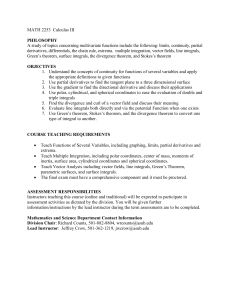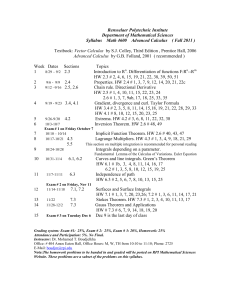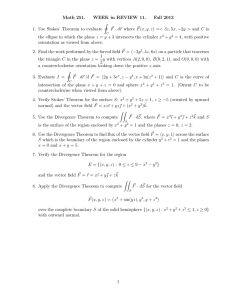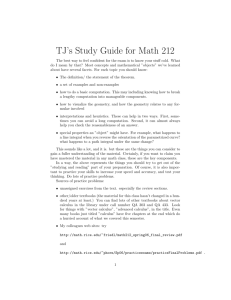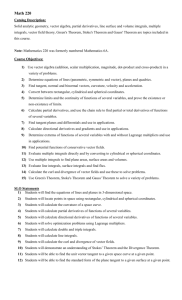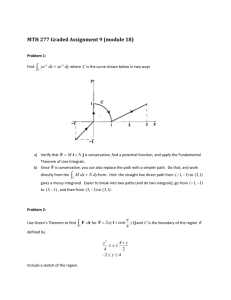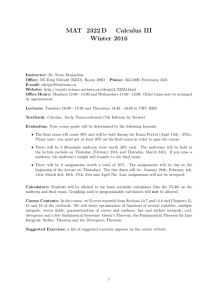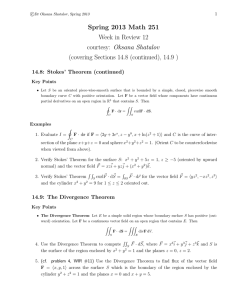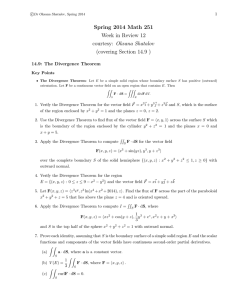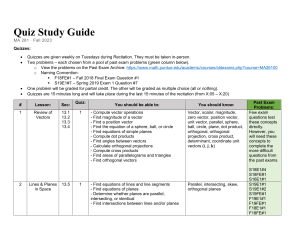18.02 Goals
advertisement
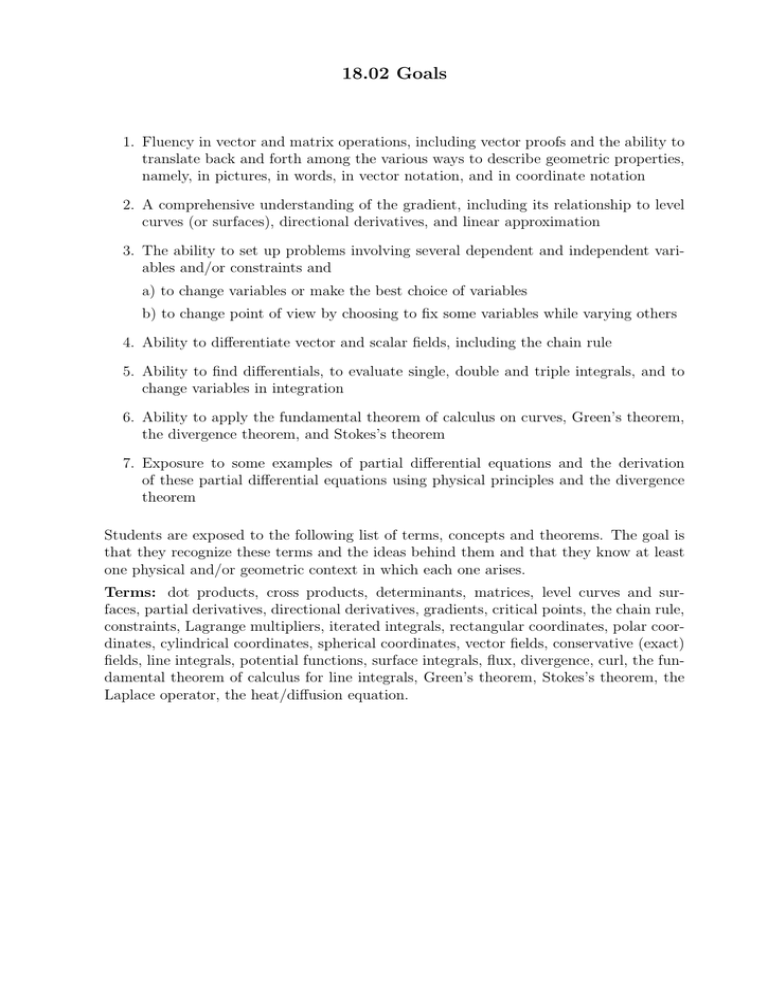
18.02 Goals 1. Fluency in vector and matrix operations, including vector proofs and the ability to translate back and forth among the various ways to describe geometric properties, namely, in pictures, in words, in vector notation, and in coordinate notation 2. A comprehensive understanding of the gradient, including its relationship to level curves (or surfaces), directional derivatives, and linear approximation 3. The ability to set up problems involving several dependent and independent variables and/or constraints and a) to change variables or make the best choice of variables b) to change point of view by choosing to fix some variables while varying others 4. Ability to differentiate vector and scalar fields, including the chain rule 5. Ability to find differentials, to evaluate single, double and triple integrals, and to change variables in integration 6. Ability to apply the fundamental theorem of calculus on curves, Green’s theorem, the divergence theorem, and Stokes’s theorem 7. Exposure to some examples of partial differential equations and the derivation of these partial differential equations using physical principles and the divergence theorem Students are exposed to the following list of terms, concepts and theorems. The goal is that they recognize these terms and the ideas behind them and that they know at least one physical and/or geometric context in which each one arises. Terms: dot products, cross products, determinants, matrices, level curves and surfaces, partial derivatives, directional derivatives, gradients, critical points, the chain rule, constraints, Lagrange multipliers, iterated integrals, rectangular coordinates, polar coordinates, cylindrical coordinates, spherical coordinates, vector fields, conservative (exact) fields, line integrals, potential functions, surface integrals, flux, divergence, curl, the fundamental theorem of calculus for line integrals, Green’s theorem, Stokes’s theorem, the Laplace operator, the heat/diffusion equation.

